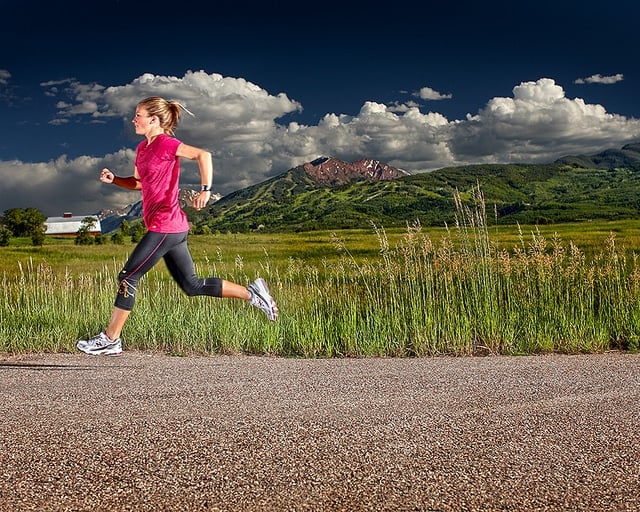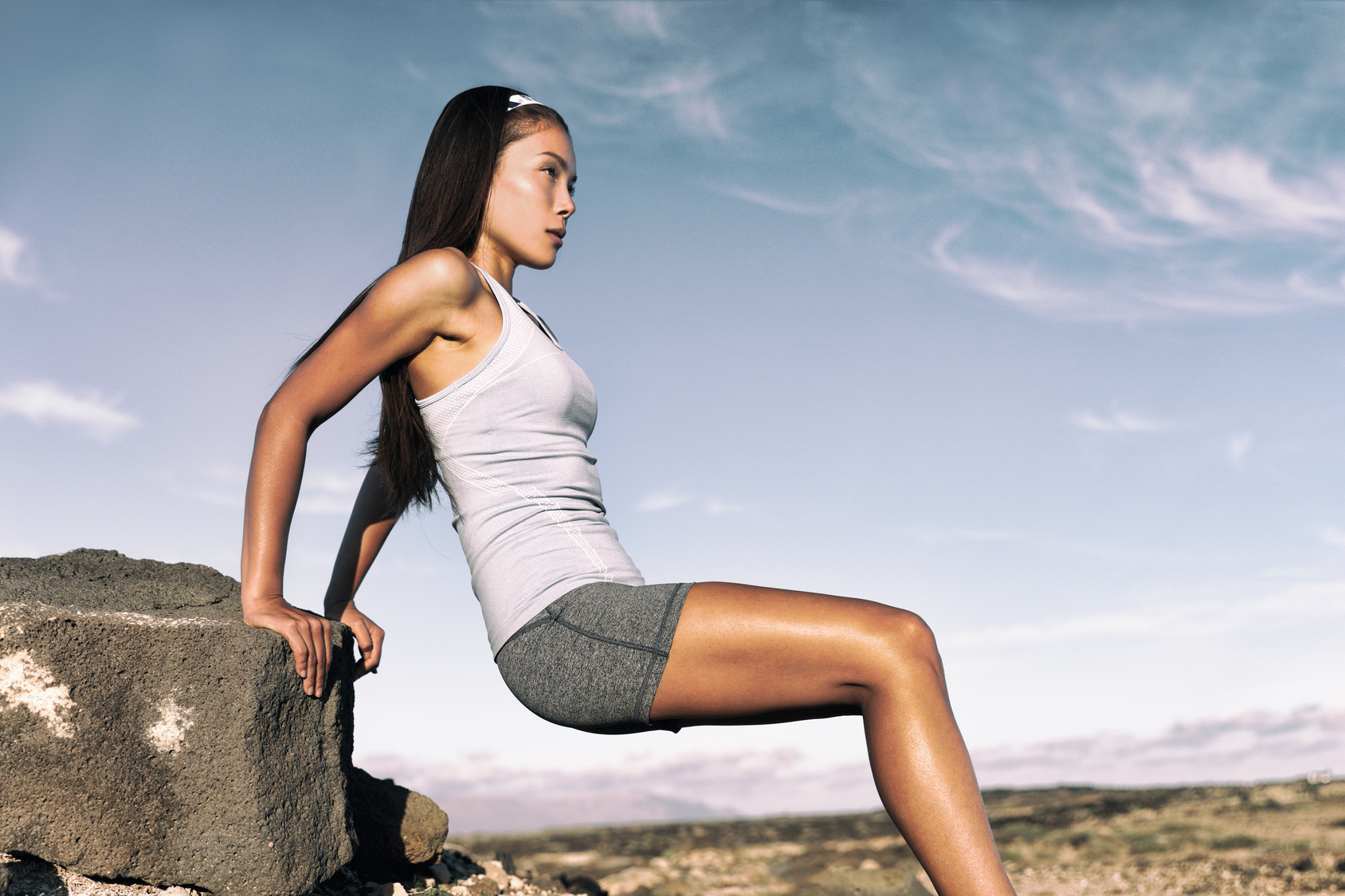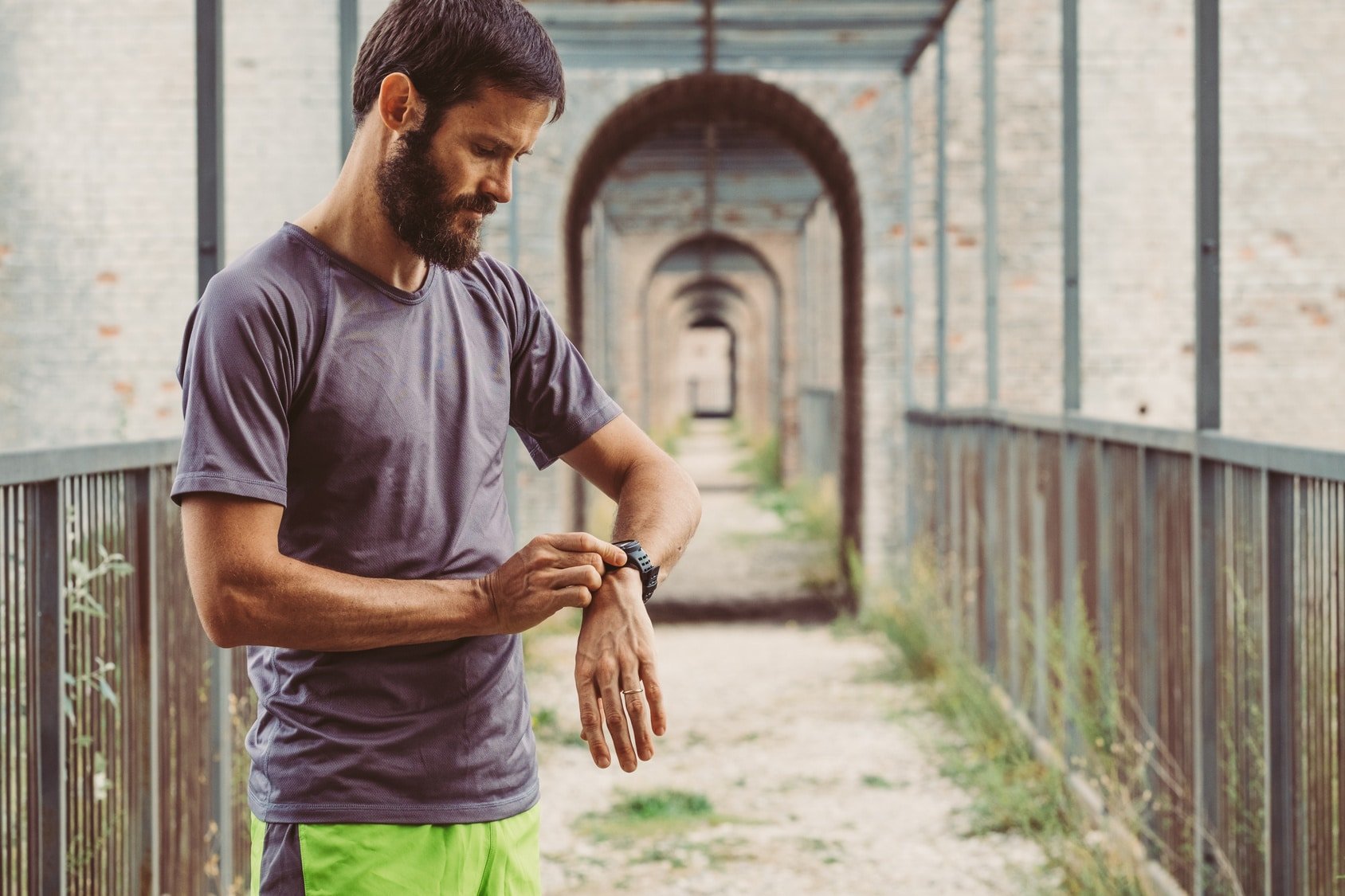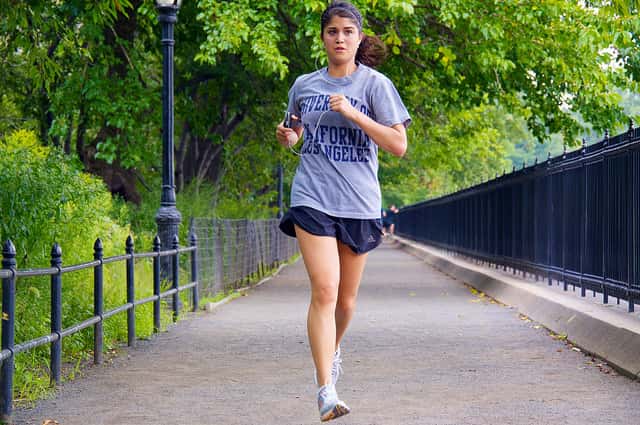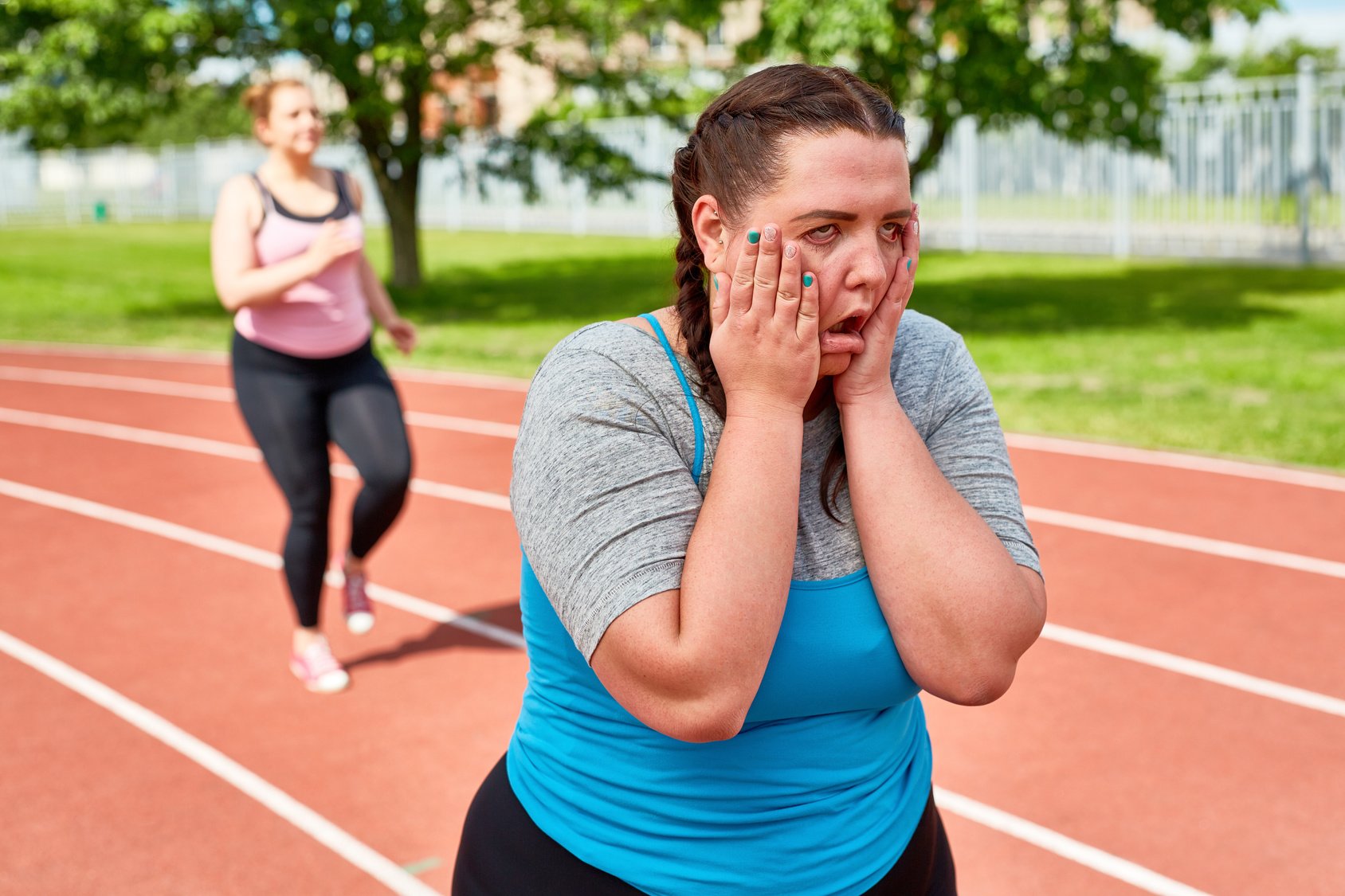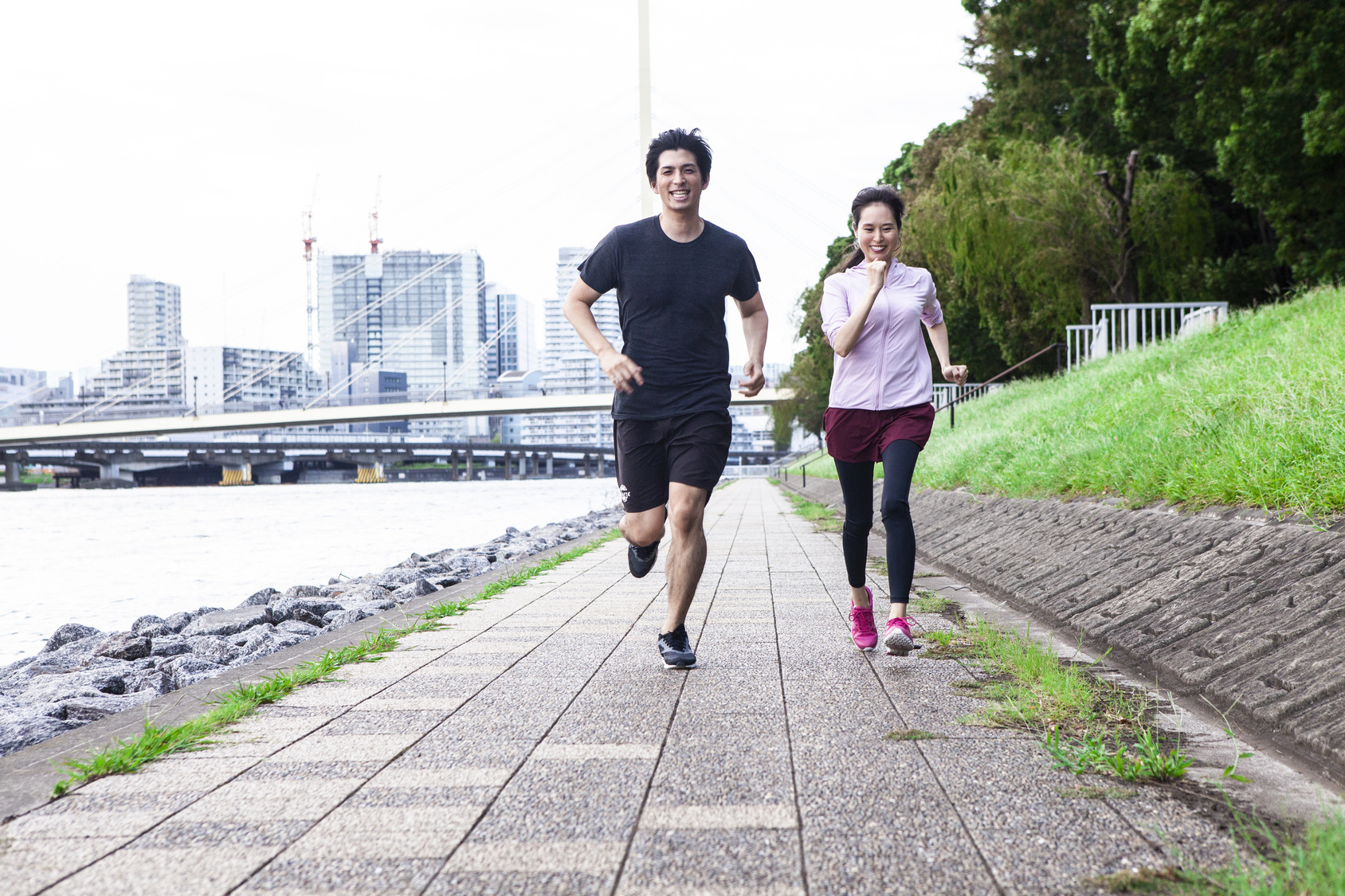Trying to run faster but stuck at the same pace?
I’ve been there.
I’m David Dack – running coach, Bali-based pavement beater, and former pace-plodder.
When I first got into running, I figured speed would just come from piling on the miles. So I ran more. Then I ran even more. And guess what? I ended up tired, banged up, and slower than ever.
Turns out, running faster isn’t about grinding yourself into the ground.
It’s about training smarter – dialing in your form, building real strength, and mixing up your workouts. Once I made that shift, I shaved minutes off my times within a few weeks.
No fancy watch.
No secret supplement.
Just better training and a little stubbornness.
If you’re new to running and frustrated with your speed, don’t worry – you’re not broken.
And no, you don’t need to become a full-time athlete. With the right plan (and a little coaching insight), you can start moving faster without burning out.
This guide blends what I’ve learned from coaching runners all over the world with what I’ve learned from dragging my own legs through brutal heat, bad races, and breakthrough moments.
Let’s break some myths, challenge the usual “run more” advice, and help you run stronger, faster, and with more purpose.
Quick & Dirty: How to Get Faster (Even as a Beginner)
- Add speed intervals: Try short bursts of fast running (30 seconds to 2 minutes), followed by slow jogging. One study showed just six of these sessions in two weeks helped runners shave about 6% off their 3K times. That’s huge for something so simple.
- Sprint uphill: Think of hills as your sneaky strength session. A 6-week study showed hill sprints improved 5K speed by around 2%. It hurts – but it works.
- Strength train weekly: Stronger legs = faster legs. Do 2–3 sessions a week of squats, lunges, and core work. It’ll boost your power and help delay fatigue.
- Fix your form: Aim for about 170–180 steps per minute and stand tall. Cleaner form = less wasted energy = faster pace with the same effort.
- Be consistent: Running 3–4 times a week beats one hard run and five rest days. Keep showing up. That’s how speed is built. Stick around – I’ll walk you through how to use these tips without feeling overwhelmed. We’ll talk wins, screw-ups, and what actually works on the road.
1. Strength Training
Let’s get one thing straight:
If you want to run faster, you need to get stronger. Period.
For years, I barely touched strength work. I thought lifting was for bodybuilders, not runners.
But then came the injuries… and the embarrassment of being smoked in a 5K sprint by a guy who looked like he skipped leg day for a decade.
I still remember limping home after one of those races.
My breathing was fine, but my legs? Toast.
That night, a buddy (who’s a personal trainer and never sugarcoats anything) looked at me and said, “Man, you’ve got no power in those chicken legs.” Ouch. But he wasn’t wrong.
So I started doing the work. I began with bodyweight squats and planks in my living room, slowly added weights, and within weeks, I could feel the difference – not just in the mirror, but in my stride.
Suddenly, hills didn’t suck as much. I had some extra kick at the end of workouts.
And most importantly? I stopped breaking down every few weeks.
Why Strength Makes You Faster
Running might feel like a cardio game, but it’s your muscles that push you forward.
The stronger your legs, core, and hips, the more force you put into every step. And stronger muscles mean less pounding on your joints – which keeps you running longer.
Think of your body like an engine.
Strength training upgrades that engine. Same fuel, more output.
The Journal of Strength & Conditioning Research backs it up – studies show that runners who lift improve their running economy (that’s how efficiently you move) and top-end speed.
My Go-To Moves for Speed Gains
You don’t need a gym membership or a barbell to get started. Just commit to a few solid moves, and hit them a couple of times a week.
- Squats: The OG of leg strength. I started with air squats and later moved on to dumbbells. This one’s essential – stronger quads and glutes mean better push-off, especially on hills or during sprints.
- Lunges & single-leg work: Running is basically jumping from one leg to the other. So training each leg on its own builds balance and fixes those pesky strength imbalances. I mix in walking lunges, step-ups, and single-leg deadlifts.
- Planks: A strong core keeps everything aligned when your body’s under stress. Side planks, regular planks – they all matter. It’s your mid-run armor.
- Plyometrics: Think jump squats, box jumps, or bounding. You don’t need to do these every day, but even a little bit fires up your fast-twitch fibers – the ones that make you explosive. And yes, explosive = fast.
I usually do 2 strength sessions a week, often on easy run days or when cross-training. Doesn’t need to be fancy – 30 to 45 minutes is enough. Focus on form, keep it consistent, and trust the process.
2. Interval Training
If there’s one workout that lit a fire under my pace, it was intervals.
I still remember one sweaty afternoon in Bali, dragging myself to the track with a simple plan: sprint hard for one minute, jog for two, repeat.
Sounds easy, right? Nah.
Two rounds in, I was already tasting my breakfast and gasping like a fish on land. I remember thinking, “Why the hell am I doing this?”
But I didn’t quit. I kept showing up.
A few weeks later, those painful 9-minute miles started dropping. Low 8s. Then high 7s. That’s when I knew – this stuff works.
What Are Intervals, Really?
Think of intervals as controlled chaos. You go fast – not kinda fast, really fast – for a short burst, then slow down just enough to catch your breath before doing it again.
For example: run hard for 30 seconds or 200 meters, then jog or walk for a minute. Rinse and repeat.
It’s like training your body to get comfortable with being uncomfortable.
You’re not just building fitness – you’re teaching your legs, lungs, and heart what fast feels like. And the more you do it, the more that “fast” becomes your new normal.
Why Intervals Actually Work
There’s a reason coaches call interval training a shortcut to speed.
When you push all-out, you tap into your anaerobic system – that’s the system that powers your final kick at the end of a race.
The recovery jogs in between aren’t just rest – they’re part of the lesson. You’re teaching your body to recover quickly and go hard again.
This kind of training boosts your VO₂ max – basically, how much oxygen your body can use when you’re running hard – and improves your running economy, which just means you move better, more efficiently. Plus, intervals burn a ton of calories in not a lot of time.
And here’s the kicker for us time-crunched folks: you can get a solid workout in just 20–30 minutes.
That’s huge.
No need for 10-mile slogs every day. Hit it hard. Recover. Done.
Try This: Beginner Interval Workout
If you’re new to speedwork, ease into it. No need to blow out your hamstrings on Day 1.
Here’s a starter workout I give to a lot of my beginner clients:
- Warm-Up
Easy jog for 10 minutes. Add some light movement drills – leg swings, ankle rolls, a few jumping jacks – get the body fired up. - Intervals (6–8 rounds)
- Run hard for 30 seconds (aim for 80–90% of your max effort – you should be gasping by the end).
- Jog or walk for 1–2 minutes to recover.
- If 30 seconds gets too easy, bump it up to 1-minute bursts with 2-minute jogs. Make it hard, but doable.
- Cooldown
Finish with 5–10 minutes of easy jogging or walking. Let your heart rate come down slow. Trust me, you’ll need this part.
During the fast bits, focus on good form: stay tall, pump your arms, don’t flail like you’re fighting bees.
By the last couple of intervals, you should be hurting – that’s where the gains are made. But take those recovery jogs seriously too. Go slow. Let your body bounce back so you can hit it again.
Pro tip: use a stopwatch or a running app to stay on track. It’s easy to lose count when you’re sucking wind. Or hit a track and do it by distance – 200m or 400m reps work great.
3. Speed Drills & Strides
Back when I first started running, I thought speed drills were just for sprinters or old-school track kids.
High knees? Butt kicks? Skipping around like a five-year-old? No thanks.
For years, I skipped drills completely. And yeah—big mistake.
One day after an easy run, a buddy of mine dragged me into doing a few.
I remember feeling ridiculous lifting my knees like I was marching in a parade while people jogged by pretending not to stare. But after a couple of weeks? I was sold.
My stride felt smoother. My cadence got quicker. And without changing anything else, I was shaving seconds off my mile. That’s when I started calling drills my secret weapon—and now I get every runner I coach to do them.
So What Are Running Drills?
Think of them as short, focused moves that teach your body how to run better and faster.
Not longer runs. Not fancy workouts.
Just technique-building movements that work like a tune-up for your form and your brain.
Here are a few common ones:
- High Knees – Run in place or move forward with exaggerated knee lift.
- Butt Kicks – Heels up, tapping the back of your thighs.
- Skipping or Bounding – Explosive hops that build spring and strength.
- A-Skips/B-Skips – Track-style skips that feel weird at first, but really fine-tune form.
- Strides – Short bursts (50–100m) at about 85–95% effort, focusing on smooth, fast turnover.
Each one lasts just 10–20 seconds, but they help your body lock in the habits that make fast running feel natural.
Why They Actually Work
Let me break it down like I do with new runners:
- You move better. Drills exaggerate the good parts of form—quick feet, upright posture, solid push-off. So when you go back to your regular runs, your body remembers. You run smoother without overthinking it.
- Your cadence improves. A lot of runners shuffle along at 160 steps per minute. Drills train your legs to move faster without forcing it. It’s like a metronome for your stride.
- You wake up your sprint muscles. Even if you’re not racing 100m, those fast-twitch fibers matter. Whether it’s a final kick in a 5K or dodging a pothole mid-run, drills make sure those muscles are ready to fire.
- Perfect for warm-ups. I don’t start any speed session or race without a few drills. They crank up the heart rate, loosen the legs, and flip the switch mentally—“Okay, time to move.”
My Drill Routine (No Track Required)
Here’s how I usually mix drills in:
- 2×20 seconds of high knees
- 2×20 seconds of butt kicks
- A few skips or hops for bounce
- Then 4–6 × 100m strides at a relaxed-but-fast pace (think mile race effort, not all-out)
Strides are my favorite.
You feel fast, but not wrecked. Just pick a flat stretch—like from one lamp post to the next—and run smooth, relaxed, and quick. Then walk back and do it again.
What Changed for Me
Once I added drills and strides into my week, something clicked. Intervals felt easier. I could pick up the pace mid-run without my form falling apart. It was like I finally unlocked that extra gear.
This isn’t just me talking, either.
I remember reading a Reddit post from a guy who called himself a “forever slow runner.” He joined a local track group that did weekly drills and strides.
After a season with them, he said, “I never thought I’d be fast… but here I am running PRs.” That stuff works, even if it feels silly at first.
4. Hill Repeats
There’s an old saying in the running world: “Hills are speedwork in disguise.”
I used to avoid hills like the plague. Seriously—if a route had even a slight incline, I’d reroute. My quads would scream, my lungs would burn, and my brain would yell, “Turn back!”
But here’s the truth: once I stopped dodging hills and started using them, everything changed.
A few years ago, I trained for a 10K on a brutally hilly course. I spent two months hammering out weekly hill sprints on a steep little road near my place in Bali (yes, Bali’s got hills too—not just beaches and scooters!).
Come race day, every climb felt like a warm-up. I beat my old PR—on a flatter course. That’s when I truly bought into hill work.
Why Hills Are Worth the Pain
Running uphill is like strapping weights to your legs while cranking your heart rate through the roof.
It hits your glutes, quads, calves—heck, even your arms and core get dragged into the fight. It’s strength training wrapped into your run. And the payoff is big.
When you get stronger on hills, flat ground feels like cheating. Suddenly your legs feel snappy, and your stride gets more efficient. Even your breathing improves.
One study in the International Journal of Sports Physiology & Performance found that runners who added six weeks of hill intervals shaved about 2% off their 5K time. That’s 30–60 seconds faster for most people—without touching track work.
Hills also clean up your form. You’re forced to lean forward (from the ankles, not the waist), lift your knees, land midfoot, and keep your cadence quick.
Try overstriding on a steep hill—you’ll learn fast why that doesn’t work. It’s like free coaching from the terrain itself.
And mentally?
Hills teach you how to suffer. Repeating tough climbs trains your brain to stay in the fight. That grit pays off big when you hit the pain cave during races.
My Go-To Hill Workout
You don’t need a mountain. A modest hill—one that takes 30 to 60 seconds to climb—works just fine. Here’s a no-BS hill session that’ll build strength and stamina:
- Warm-Up: 10–15 minutes of easy jogging on flat ground. Throw in some dynamic moves (like leg swings or skips) and maybe a couple of strides.
- The Repeats: Sprint uphill at a strong effort—not all-out, but like you’re doing a hard 400m rep. Lean slightly forward from the ankles, pump your arms, pick your knees up, and drive through your toes. Focus your eyes a few meters ahead—not at your feet.
- Recover: Walk or jog down slowly. Use this as your break. Let your heart rate come back down before starting the next rep.
- How Many? If you’re new, start with 4–5 reps. Been running hills a while? Go for 6–10. You can increase duration to 60 seconds per climb as you build strength.
- Cooldown: Jog 5–10 minutes easy. Stretch your quads and calves—you’ll thank yourself tomorrow.
This workout is hard.
The first couple reps might feel okay. But by the last one? Legs on fire. That’s the sweet spot.
You’re building serious leg power and heart strength. Once a week is enough. Treat it like an interval workout—recovery matters.
Can’t Find a Hill? Here’s What to Do
- Use a treadmill. Crank the incline and simulate hills that way. Just be careful getting on and off during rest.
- Stadium stairs. They’re great for mimicking that uphill grind.
- Overpasses or ramps. Ugly? Maybe. Effective? Absolutely.
Just a heads-up: don’t bomb downhills unless you’re training specifically for that. Running hard downhill beats up your legs. Stick to easy descents for now, especially if you’re new to this.
And listen to your body.
Hill sprints are intense. If your calves or Achilles start acting up, shorten the hill, take more rest, or walk part of the way.
No shame in scaling—it still counts if you’re pushing relative to your own effort.
Bottom Line: Hills Don’t Lie
5. Plyometric Training
I’ll be honest—when I first heard the word “plyometrics,” I pictured pro athletes doing ridiculous box jumps in slow-mo highlight reels.
The kind of stuff that feels worlds away from regular runners like us. I used to laugh and say, “If I try that, I’ll probably face-plant.”
But I couldn’t ignore the buzz. Runners were raving about how plyos gave them that “extra gear” on the road. So I gave it a shot.
I started simple—jump squats, single-leg hops, just messing around on a patch of grass near my house. And yeah, my legs hated me the next day.
But something changed. My stride started to feel lighter, more powerful. I could pop off the ground quicker, especially during strides and surges. I was hooked.
So, What Are Plyometrics, Really?
Plyos are basically jump training.
They’re explosive movements that force your muscles to fire fast and hard. We’re talking moves like jump squats, box jumps, burpees, single-leg hops, even jump rope.
The goal is to build that snap in your stride—turning basic leg strength into actual speed.
Think about running for a second: every step is like a mini jump. So it makes perfect sense—train your legs to jump better, and your stride gets stronger and snappier.
Why Plyos Matter for Runners
Here’s the big win: plyos help cut down your ground contact time—that tiny window when your foot’s touching the ground each step.
Fast runners bounce off the ground like rubber balls. Slow runners? They stick like glue.
Plyos teach your muscles and tendons to act like springs.
You train that “stretch-shortening cycle,” meaning your muscles load and release power fast. Less time on the ground means more speed without more effort.
I saw one runner online say plyos gave them “literally free speed.” They tracked their ground contact time dropping from 0.22 seconds to 0.20.
That sounds tiny, but stretch that over thousands of steps in a 5K or 10K, and you’re shaving serious seconds off your finish time.
And it’s not just about speed—plyos improve your form too.
You’ll naturally start pushing off the ground stronger, hitting more of a midfoot strike, and running more efficiently.
Bonus? They’re good for your bones and joints.
Plyos strengthen tendons and help your body handle impact better. That’s injury prevention baked right into your speed work.
Plyos You Can Start Today (No Gym Required)
You don’t need a fancy setup. Just your body, some space, and maybe a soft patch of grass or mat.
- Jump Squats. Drop into a squat, then explode straight up. Land soft, reset, go again. 8–10 reps per set. This lights up your quads and glutes. First time I did these, I tapped out at 5 reps. Total leg noodles.
- Box Jumps. Find a low, sturdy box or bench. Squat slightly and jump up, landing with both feet. Step down carefully. It’s not about height—it’s about clean, explosive takeoff.
- Single-Leg Hops. Balance on one leg and hop forward 10–15 times. Switch legs. This builds leg power and ankle strength like nothing else. Use soft ground if you can.
- Lateral Jumps. Jump side to side over an invisible line. Keep it quick and controlled. This is great for activating stabilizer muscles we often ignore.
- Burpees (with a Jump at the End). Classic move—drop to plank, back to squat, jump up. Brutal but effective. Full-body cardio and power in one hit. Even 5 reps can wreck you.
- Jump Rope. Old-school but gold. Light, rhythmic plyo that builds coordination, foot speed, and ankle toughness. Plus, it’s easy to sneak into your warm-up or cooldown.
How to Add Plyos Without Wrecking Yourself
Start slow.
One or two sessions a week is plenty, especially if you’re also doing strength or speed work.
Don’t go straight from a long run into max-effort box jumps either.
I like to toss in a 5-minute plyo circuit after strength work—say, lunges and planks, then jump squats and lateral hops to finish.
Quality matters more than volume. You want these explosive, not sloppy.
And for the love of running, warm up first.
Cold muscles and high-impact moves are a recipe for trouble. Also, if your joints start complaining, take that seriously.
Muscle soreness is okay. Joint pain? That’s a red flag.
What the Pros Say (And Do)
One experienced runner shared how they add 3 minutes of plyos before lifting sessions—just part of the warm-up.
Things like pogo jumps and quick rebound hops off a step. They dropped their ground contact time by 20 milliseconds and swore it felt like getting faster for free.
You don’t need to measure milliseconds to notice it. You’ll just feel quicker. Running starts to feel more like you’re bouncing forward, not dragging yourself down the road.
Run Light, Run Fast
I still remember the first time a coach broke down my running form.
He didn’t start with fancy shoes or expensive gear—he just asked me to count my steps for 60 seconds.
I barely hit 160. I thought I was cruising, but I was overstriding like crazy—taking big, lazy steps that looked fast but felt heavy. My legs were absorbing more shock than they needed to, and my pace wasn’t improving.
“Let’s bump that up closer to 180,” he said.
At first, it felt awkward.
I had to shorten my stride and move my feet faster. But something clicked.
Within a few weeks, I was running smoother, faster—and my legs weren’t trashed after every session. That’s when I realized how much cadence matters.
What’s Cadence, Anyway?
Cadence is just the number of steps you take per minute.
Count how many times your right foot hits the ground in 60 seconds and double it. That’s your cadence.
Most recreational runners clock in around 150 to 170 SPM on easy runs. Elite runners? They’re often around 180+, even when running at a moderate pace—and can push past 200 when sprinting.
That 180 number gets thrown around a lot, and while it’s not some magic golden rule, it is a solid benchmark. Research from the Journal of Strength & Conditioning Research found that many efficient runners naturally hover around this cadence.
Now, if your cadence is down in the 150s or 160s when you’re cruising, odds are you’re overstriding—your foot’s landing too far ahead of you.
That’s like tapping the brakes with every step. Upping your cadence helps you land more under your center of gravity, so there’s less braking and more flow.
Why Cadence Impacts Your Speed (and Your Legs)
Think about it this way:
Speed = stride length × stride rate.
Most runners try to get faster by stretching their stride longer. But that often leads to sloppy mechanics and injury.
Instead, increasing your step rate is usually a smarter move. It keeps your form tighter, reduces the time your foot spends on the ground, and makes your stride more efficient.
Even bumping your cadence by 5–10% from where you are now can help reduce impact forces and make running feel smoother.
A study published in the Journal of Orthopaedic & Sports Physical Therapy found that increasing cadence leads to less load on the knees and hips—especially helpful if you’re injury-prone.
Bottom line? A higher cadence helps you run faster, more efficiently, and with less wear and tear.
And no, you don’t need to hit 180 on every run. If you’re at 165, try nudging it to 170–175 and see how it feels.
So How Do You Improve Your Cadence?
Start with this: Count your steps. On your next run, count how many times your right foot lands in 30 seconds, then double it. If you’re under 170 and want to get faster or reduce injury risk, try these tools:
- Cue Yourself: “Quick and Light”. Don’t try to force it. Just shorten your stride slightly and think light, quick steps. I sometimes imagine the ground is hot lava—keeps my feet moving fast and clean.
- Use Music or a Metronome. I know, sounds goofy—but it works. Download a metronome app and set it to 175–180 BPM. Or pick songs that match that beat. Rock Lobster by The B-52s? Weird song. Perfect cadence.
- Do Cadence Drills. Quick-feet drills, high knees, or even strides focused on faster turnover can work wonders. One classic move: count your steps for 30 seconds while running in place and try to beat that number next week. Doesn’t have to be fancy—just consistent.
- Take it Slow. Don’t jump from 160 to 180 overnight. That’ll leave your calves screaming. Aim for 5% jumps at a time. Sit at the new number until it feels right, then bump it again.
- Fix Your Form. Cadence and form go hand-in-hand. A quicker cadence helps you land more underneath you, which is what you want. Keep your upper body relaxed and pump your arms just a bit faster—your legs will follow.
7. Jump Rope
Who knew that one of the best tools for becoming a faster runner was something most of us left behind on the playground?
I sure didn’t—until I gave it a shot.
I picked up jump rope during a cross-training phase.
It wasn’t some grand plan. I just remembered reading that Muhammad Ali used it for footwork. If it was good enough for the champ, why not me?
First try? Total disaster.
I was tripping after every 10–15 skips, sweating buckets in the Bali heat, and breathing like I’d just sprinted a 400-meter repeat.
But I stuck with it a few days a week. It became this weird mix of fun and brutal, and to my surprise, something changed on my runs: my feet felt snappier.
My cadence got quicker. I was spending less time on the ground. Even my balance and calf strength improved.
That’s when it hit me—this little rope was teaching me the exact kind of springy footwork good runners are built on.
Why It Works
Jumping rope is basically secret sauce for runners. It trains your feet, calves, and Achilles to load and rebound fast—just like they should when you’re running.
You’re hopping on the balls of your feet over and over, which forces those muscles to get better at absorbing and returning energy.
Think of it like mini plyometrics with rhythm.
It also sharpens your coordination and balance, especially in your ankles and feet—which, by the way, are literally where all your running starts. Ignore those areas and you’re asking for injuries.
Jumping rope lights up your heart rate fast too, so it’s solid cardio. And here’s the kicker—it rewards good form and punishes bad.
If you land heavy on your heels or let your rhythm slip, the rope catches. You’ll feel it right away.
That feedback forces you to stay light and quick—pretty much the exact traits we chase in fast running.
Some running coaches actually use rope skipping to help athletes fix overstriding or heavy footfalls.
The rope makes you land under your center with bent knees, not out in front. That’s how we should be running anyway—centered, springy, and smooth.
How To Add It To Your Training
You don’t need to go full Rocky Balboa. Just start small. Here’s how I’d do it:
- Pick the Right Rope: A simple speed or PVC rope does the job. Stand on the middle—handles should hit around your armpits.
- Keep It Simple: Begin with 5 rounds of 30 seconds, or 50 skips per round. Trust me, it’s harder than it sounds if you haven’t done it since grade school. Stay on your toes, jump just high enough to clear the rope, and let your wrists—not your arms—do the work.
- Use It As a Warm-Up or Extra Cardio: 3–5 minutes pre-run gets your feet and ankles firing. Or throw in 10–15 minutes on a non-running day as a cross-training burn.
- Try Variations: Once you nail the basics, do jogging steps (alternate legs), lateral hops, or short single-leg hops. These mimic real run movements even more.
- Build Gradually: Over time, work your way up to 5 minutes nonstop. That’s plenty for runners. Boxers might do 10+, but even half that will light up your calves and sharpen your form.
My Routine
I like throwing jump rope in after an easy run or on off days.
I’ll hit 10 minutes of different skips—two-foot, high knees, lateral steps. It gets my heart pumping and my calves humming, and when I head out for a run the next day, I feel quicker off the ground. It’s like it resets my stride.
Backed by Science, Too
This isn’t just a “feels good” thing.
A study in the Journal of Strength & Conditioning Research found that runners who used jump rope as a warm-up improved their 3K time trial results compared to those who just did static stretching.
Their ankle strength got better too. Just five minutes of jump rope before running was enough to see results.
Why? Likely because it fires up the nervous system and gets your lower legs primed to move well.
8. Nail Your Form
I used to think running form was something you were either born with or not. I’d see photos of elite runners gliding effortlessly, arms smooth, posture perfect—and assume I looked kinda like that.
Then I saw a race pic of myself.
I was slouching, heel-striking, and flailing my arms like I was chasing a mosquito swarm. Brutal.
That photo was a wake-up call. I realized that proper form isn’t about looking good—it’s about running better. Smoother, faster, more efficiently. And the best part? Form isn’t fixed. You can train it.
I had to relearn the basics myself after a coach pointed out I was overstriding like crazy.
Fixing it took a ton of work—cue reminders mid-run, watching myself on video, and form drills till I wanted to puke—but once I locked it in, I could feel the difference instantly. It was like my body stopped fighting itself.
Think of it like tuning up a car. Same engine, but now it runs way better with less fuel.
What Good Form Actually Looks Like
Let’s break down what actually matters when it comes to running form. These are the real-world fixes that help you go faster without even trying harder.
Posture: Run Tall
Stand proud. Imagine a string pulling you up from the top of your head. That posture opens your chest, helps you breathe deeper, and fires up your core to keep you stable.
Avoid the slouch—shoulders rolled forward = short breaths, less power.
I tell my athletes: “Chest proud. Eyes on the horizon. Not on your shoes.”
Lean In (Just a Bit)
You want a slight forward lean from the ankles—not your waist.
Like you’re falling forward and catching yourself. Subtle, but powerful. If someone watched you, they might not even notice it—but you’ll feel it.
And whatever you do, don’t bend at the hips. That’s back pain waiting to happen.
Footstrike: Land Under Your Hips
This one’s huge. Most beginners land way out in front, smacking the ground with their heel. That’s not running—that’s braking.
Instead, aim to land with a bent knee directly under your body, not ahead of it.
Whether you hit midfoot or forefoot isn’t as important as where and how you land. Soft. Controlled.
I used to heel-strike hard. Over time, I shifted toward a midfoot strike—and that alone helped me run smoother and stay injury-free longer.
Arm Swing: Controlled Power
Your arms aren’t just passengers—they help drive your rhythm and speed.
Keep them bent at 90 degrees. Swing front to back, not across your body. The swing should come from your shoulders, not your elbows.
Imagine brushing your hips with your thumbs. That motion keeps you straight and strong. If you want to speed up, pump your arms faster—your legs usually follow.
And yeah, sprinters pump like mad for a reason.
9. Lighten the Load, Pick Up the Pace
Let me start by being real with you: This tip only matters if you actually have extra weight to drop.
I’m not talking to lean runners chasing unrealistic goals or getting obsessed with the scale. But for those of us carrying a little more than we need—yeah, it makes a difference.
I’ve lived this one.
A few years back, I hit a wall with my race times. I was grinding: speed sessions, long runs, tempo work—you name it. But my performance just flatlined.
What I didn’t want to admit at first was that I was carrying around 10–15 pounds of nasi goreng weight. If you know Bali, you know what I mean. Delicious, greasy, and deadly for waistlines.
Eventually, I cleaned things up—no crash diets, just smarter food choices, smaller portions, and fewer late-night snacks. I dropped about 12 pounds over a few months.
And let me tell you—it was like someone flipped a switch.
Suddenly, every run felt smoother.
Hills weren’t as brutal.
My feet hit the ground lighter.
It felt like I’d taken off a weighted vest—because I basically had. I remember running a 5K not long after that and clocking nearly a full minute faster.
No magic workouts. Just less drag.
Why Extra Weight Slows You Down
Here’s the basic physics: every step you take, you’re moving your body forward.
More body mass = more effort. And if some of that mass is just excess fat, then losing it can straight-up make you more efficient.
Think of it like this: if a sports car is loaded with luggage, it won’t accelerate the same.
Take that load off, and it moves like it’s supposed to. Same with your body.
There’s actually a general rule floating around: lose a pound, gain about 2 seconds per mile—all else equal.
Runner’s World highlighted this in a piece based on research and coaching insight. That means a 10-pound drop could make you about 20 seconds per mile faster, just from shedding fat—not changing your training at all.
In my case?
I lost 12 pounds and took about 45 seconds off my 5K. That math checks out for me.
What the Science Says
The energy cost of running goes up with body weight. So yeah—lighter runners use less energy at the same speed. Or flip it: you can go faster for the same effort.
And we’re talking fat loss here, not muscle. You want to keep the muscle that helps you move—especially in your glutes, quads, and calves. That’s your engine.
How I Did It (And You Can Too)
No fads. No fasting apps. No cutting carbs down to dust.
I just:
- Cleaned up my meals (less junk, smaller portions)
- Stayed in a small calorie deficit (maybe 300–500 a day)
- Aimed for 0.8–1g of protein per pound of goal weight to protect muscle
- Tracked my weight weekly, not daily
- Kept running consistently
It took a few months, but the difference was night and day. And running actually felt better each week. That’s the best part: as you lose, your runs improve, which motivates you to keep going.
One Warning: You Can’t Outrun a Bad Diet
Especially if you’re just starting out. In the beginning, sure, running burns a bunch of calories. But eventually, your body adapts. Diet becomes the lever that moves the needle.
That old saying is true: you can’t outrun a bad diet—not if you’re trying to lean down.
More Than Just Speed
Losing excess weight doesn’t just help your mile time. It reduces the pounding on your joints, too. Less stress on knees, hips, ankles—especially important if you’re running big mileage or doing trail runs like I do.
It also bumps up your VO₂ max per pound of body weight. That’s basically your aerobic horsepower. Same oxygen, smaller body to fuel.
This is why elite runners are so lean—they’re not light for vanity, they’re light for performance.
No, you’re not an elite. Neither am I. But the principle still holds.
Don’t Just Take My Word for It
I remember reading a thread on Reddit where someone wrote: “I lost weight. All the above advice was good, and I lost weight.” That was it.
And honestly? It hit. Sometimes we overcomplicate the hell out of this game. For a lot of beginners, the simplest move is just dropping extra pounds. Training stays the same—but boom, the times fall.
That said, you don’t need to lose weight to get faster. Some of the strongest runners I know are heavy for their frame, but they move well because they train smart.
But if you are overweight and trying to get faster? Dropping that baggage gives you a double-win: better engine + less load.
Do It the Right Way
Here’s what worked for me and my coaching clients:
- Eat Real Food: Load up on veggies, lean protein, good carbs, and healthy fats. Ditch the sugar bombs and ultra-processed crap.
- Avoid Starving Yourself: If your runs start to feel awful and recovery tanks, you’re cutting too much.
- Stay Hydrated: Especially in places like Bali. Sometimes you’re just thirsty, not hungry.
- Lift Weights: Keep the strength sessions. They help protect muscle and can boost metabolism a bit.
- Sleep Like It’s Training: Sleep messes with your hunger hormones more than most people realize.
- Be Patient: You didn’t gain it overnight, and you’re not going to lose it in a week either.
10. Be Consistent and Patient
Let’s be real—nothing you’ve read so far matters if you only follow it once in a blue moon.
The real game-changer? Consistency. It’s not flashy, it won’t win social media points, but it’s the truth.
You can have the fanciest training plan on Earth, but if you bail on it after week two, it’s worthless. I’ve coached runners of all kinds, and the ones who make serious progress aren’t necessarily the ones logging crazy mileage or crushing monster workouts.
They’re the ones who show up. Week after week. No drama. No magic. Just honest work.
When I first got into running, I was all over the place. One week I’d run every day. The next, I’d vanish into a Netflix hole and ghost my shoes. I didn’t get anywhere. Eventually, I made a deal with myself—four runs a week, no matter what.
Bali rains? Bring it.
Bad day? Doesn’t matter. I stuck with it.
And the magic? It didn’t show up in a single run—it showed up in the weeks stacked on top of each other. My average pace dropped by over a minute per mile. Not because I suddenly got talented, but because I stopped quitting.
Why Consistency Actually Works
Your body adapts when you train it regularly. Not just when you feel like it. Skip two weeks and you’re basically restarting from scratch. That momentum you were building? Gone.
Consistent running keeps the signal going: “Hey body, get stronger, get faster, stay sharp.”
Miss too many runs, and that signal gets weak. Your gains fade. Your habits break. You start questioning your motivation.
Here’s another thing—consistency builds identity. When you’re the kind of person who runs four days a week, even when it sucks, it becomes who you are. No mental wrestling every morning.
Small progress compounds. One extra rep. One longer long run. One faster mile. Stack those over months, and suddenly you’re a completely different runner.
Patience: The Other Half of the Formula
Look, improvement isn’t a straight line. Especially once you’ve moved past beginner gains. Sometimes you train hard for weeks and feel stuck. Then boom—one day you nail a tempo run or crush a 5K out of nowhere.
That’s just how the body works. Progress hides until it doesn’t.
I tell my runners: trust the boring stuff. The quiet weeks. The runs that feel “meh.” They’re working behind the scenes. Just don’t stop.
Don’t Mistake Consistency for Overkill
This doesn’t mean hammering yourself every day. That’s how you burn out or get injured. I see this mistake all the time—someone goes hard seven days straight, then disappears for three weeks with shin splints.
Real consistency means sustainable effort. I’d rather you run four times a week at easy to moderate paces and stick to it for three months than go beast mode for two weeks and crash.
Recovery isn’t weakness—it’s part of the plan.
Rest days are when your body actually gets stronger. So schedule them. Protect them. Earn them.
Sample Week: A Balanced Consistency Blueprint
Here’s a rough layout I use with intermediate beginners (someone comfortable running 3–4 miles). Adjust the volume if you’re newer, but the structure? It’s gold.
- Monday – Intervals: 8 × 400m at 5K effort with 200m jogs. Or 8 × 1-minute hard, 2 minutes easy. Push the pace here. This is your “speed punch.”
- Tuesday – Strength + Easy Run: Squats, lunges, planks for 30 minutes. Then maybe 2–3 miles slow. Legs recover. Body gets stronger.
- Wednesday – Hill Work: 6–8 uphill sprints (20–30 seconds each). Power + endurance in one go.
- Thursday – Easy Jog or Rest: 3–4 miles conversational. Optional: toss in a few relaxed strides to keep the legs snappy.
- Friday – Tempo Run: 4 miles at that “comfortably hard” effort. Feels tough but controlled. Builds speed endurance.
- Saturday – Long Run: 6–8 miles slow and steady. This is your foundation builder. Keep it chill.
- Sunday – Rest or Cross-Train: Go for a walk, a swim, jump rope, or just recover hard.
You’ll notice: only 2–3 “hard” days. The rest? Easy, steady, or full recovery. That balance is what lets you show up fresh on workout days—and actually improve.
How Fast Will You Get?
From what I’ve seen, most runners who train smart and stay consistent see real improvement in about 4–6 weeks.
That’s the sweet spot. But don’t stop there. The longer you stay at it, the more you unlock. It builds. Like bricks in a wall.
Mindset Check: Don’t Rush It
Everyone wants to sprint their way to speed. But the truth? It’s a grind. You’ve got to be okay with slow growth.
I once coached a guy stuck at 30 minutes for the 5K. He felt hopeless.
For three months, we kept things steady—building base, adding short intervals, keeping things sustainable. He barely noticed the change. Until I had him do a time trial… 26:00 flat. Shocked him.
That’s what consistent, smart training does. It sneaks up and transforms you.
Kill the Comparison Game
You’ll always find someone faster. Someone who seems to leap forward while you’re stuck grinding. Ignore it. Everyone’s got their own pace. Focus on your path.
If you plateau? Don’t freak out. That’s normal.
Tweak something. Hold steady. Sometimes you just need one new stimulus—or a rest week—and you’re back climbing again.
Stay Accountable
Here’s what helps:
- Run with a buddy once a week. Non-negotiable miles.
- Sign up for a race 6–8 weeks away.
- Log your runs. Even a calendar with checkmarks can be satisfying.
I still get a little dopamine hit from crossing off a training day. It works.
Celebrate those mini-wins. You ran three times this week? Hell yes. Your pace dropped 30 seconds? That’s real progress. Stack those and they’ll carry you through the tough days.
Final Takeaway
Consistency and patience are the bedrock. Everything else—speed drills, form tips, shoes, training plans—won’t stick without them.
If you fall off track? No big deal. Get back to it the next day. That’s how you build a long-term habit that actually changes you.
I always say: training is like planting seeds. You water them. You wait. You trust. And one day, there’s a breakthrough.
Maybe it’s a shiny new PR. Maybe it’s just the feeling of flying down a stretch of road you used to struggle on. That’s the harvest. That’s why we run.
What’s Next?
Now it’s your turn.
- What’s your mile pace right now?
- What day this week will be your interval day?
- Can you commit to four runs this week?
Pick one action. Just one. Then go do it.
Got a question? A win to celebrate?
Drop it in the comments—I’d love to hear it. Let’s build a community of runners who show up, run hard, rest smart, and stay the course.
Speed is earned. Now go earn it—one step at a time.




